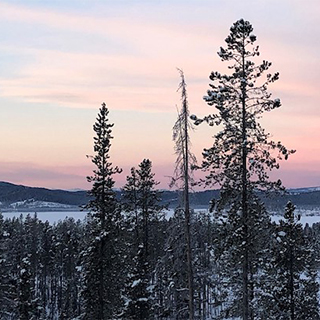Current Projects
Social Tolerance of Wolves in MT
The Lab is partnering with the Montana Department of Fish, Wildlife and Parks to understand social tolerance of wolves in Montana. Using a series of mail surveys to stakeholders across the state, we seek novel measures of tolerance which better inform management. Coupling these measures with past survey efforts will give us the first insights into how tolerance has changed over time since recolonization, reintroduction, and legal hunting was reinstated. Additionally, we seek to understand public perceptions of wolf management and whether or not different stakeholders understand and approve or disapprove of current agency approaches.
Human Dimensions of Grizzly Bear Management
Grizzly bear populations and ranges are expanding – since being listed as endangered in 1975, grizzly bear population numbers in the contiguous US have increased from as few as 600 to 1550. Many of these bears live in Montana. As grizzly bear populations continue to expand and the overlap between humans and bears grows, this study investigates people’s attitudes, values and beliefs towards these bears and their management. With this work we seek a complete understanding of how Montanans view grizzly bears, where they think grizzlies should and shouldn’t live, their emotional reactions to these bears, whether or not people are satisfied with current management practices for grizzly bears, and whether people take actions to secure bear attractants. This work is being conducted by partners at FWP and with Lab Co-directors Libby and Alex, and PhD student Holly (no relation to the fat bear champion of 2019).
Social Dimensions of River Restoration on the Upper Clark Fork River
Ecological restoration has become a dominant natural resource management activity worldwide. However, the social dimensions of river restoration are not well understood especially in the context of large-scale restoration projects embedded in complex social-ecological systems like the Clark Fork River. Over the past five years we have conducted in-depth qualitative interviews with key project leaders and surveyed Milltown residents to understand the success of the restoration project. We recently expanded our social science work by collaborating with Dr. Theresa Floyd (UM School of Business) on a social network analysis. We focused our efforts on the Milltown Dam removal to understand how social networks influenced project and restoration goals. PhD student Peter Metcalf played a critical role in connecting study participants and developing a comprehensive list of actors involved in the project. We are currently analyzing the social network data and expect to have results in spring 18.
Improving Climate Information for Water Use Decisions
This project was recently funded by the USDA National Institute of Food and Agriculture to explore the efficacy of climate information for Montana farmers and ranchers to improve adaptation to drought and water variability. Climate tools will be developed from data compiled at the MT Climate Office and then organized in ways that are easy to understand. The study will follow an experimental design that uses newly developed climate tools to provide information for agricultural producers to help with complex decisions regarding climate and drought. We will use a mixed-method design that pairs qualitative focus groups and interviews with quantitative survey data. This study is in collaboration with Dr. Laurie Yung and Dr. Kelsey Jencso (MT Climate Office).
Microtargeting for Conservation Easements in Montana
Marketing is often seen as the enemy of conservation by promoting irresponsible overconsumption of resources. However, the tools marketers have used and refined can be redeployed to improve conservation outcomes. In this study, we are applying data analytics tools (i.e., microtargeting) to predict landowner willingness to participate in conservation easement programs across Montana. The predictive model we’re building will produce a social receptivity map for conservation easements which will help conservationists more effectively focus their resources towards achieving conservation goals.
